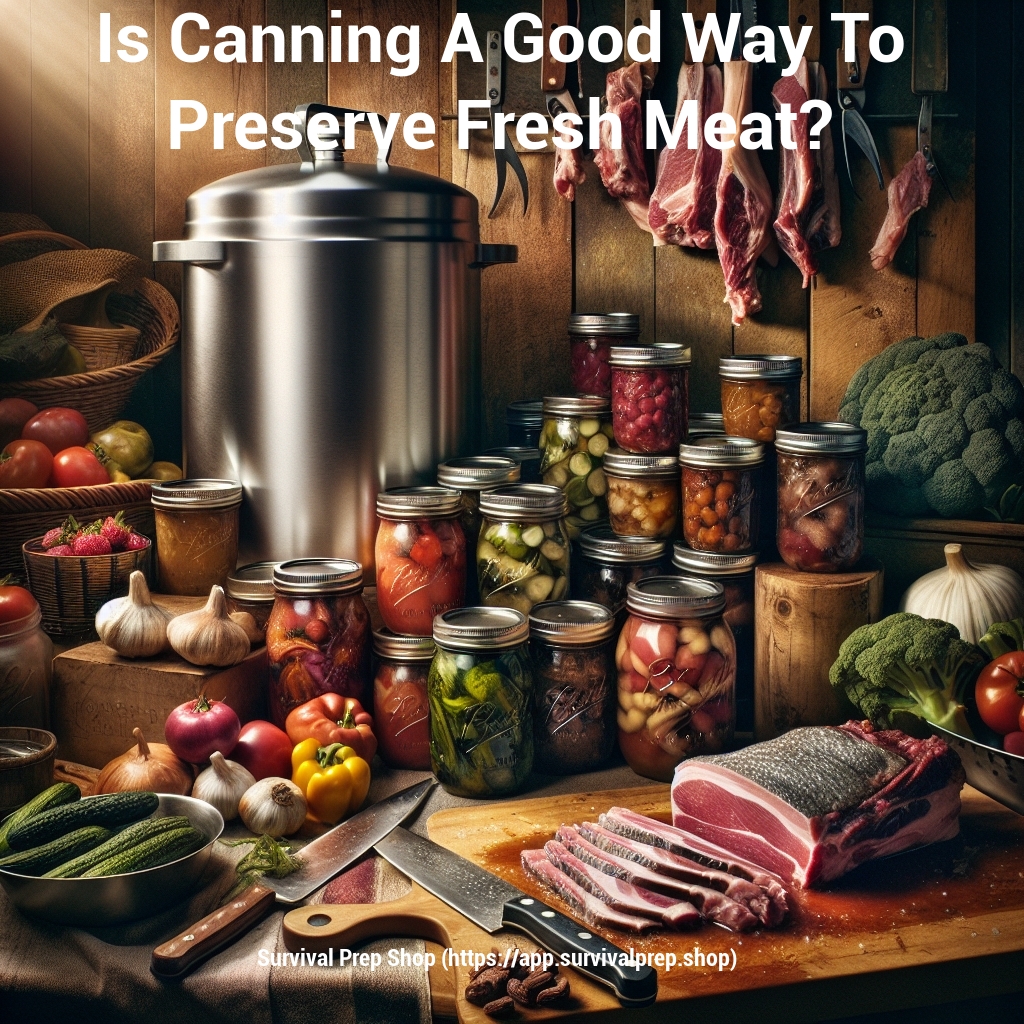
Hello everyone, and welcome to the Survival Prep Shop.
I’m delighted to join you in another invigorating discussion about all things survival. As we explore together, keep in mind that my advice comes from a place of personal practice and reflection.
Pressure canning food items is one of the popular preservation techniques preppers rely on. Storing organic or freshly grown produce might not be easy if it hasn’t been preserved right. Think about it – how long can you stock a big chunk of meat? Doesn’t matter if it is a rib eye or a cheap cut, storing raw meat can be tricky. A prepper though learns the drills of preserving meat and other proteins to be consumed later. The idea is to extend the shelf life of the protein without tampering with the quality or nutritional value of fish and meats.
Preppers don’t start by investing riches in fancy canners. A simple canner is good equipment to start with. Before spilling beans on how to get started with canning, knowing the perks of canning is worthy, right?
The goods of canning proteins
Survivalist or not, getting hands on good quality meat every day is a swanky expense. When you are hit by a crisis, saving that kind of money is out of question. In fact, stocks of meat could be limited too. There are enough reasons to justify that canning is an effective method of preserving meat.
- Saves you big money: Pork, beef, poultry, oysters, fish, and everything you desire can be stored when canned. Buying regular portions of proteins frequently costs you a lot more than buying bulk meats and preserving the same for future consumption.
- Makes a great emergency supply: You don’t have to wait for a disastrous hurricane to strike down your place to make use of canned meat. Issues as small as a power outage can teach you the importance of preserved goods. Having stored meat doesn’t let you skip snacking on proteins, as a crucial part of your diet.
- The convenience is real: When proteins are canned, they are pretty much cooked. When you stay put in a big-out location, succumbing to a disaster, spending hours to forage and cook is worthless. Canned meat is best used in one-pot recipes that are super quick to cook up.
- A cheaper and a better alternative to store meat: Self-prepared canned meats are way better than the store-bought ones. What’s more? You know that your produce is not loaded with harmful chemicals for extended shelf life. Plus, stocking up a variety of canned meat can burn holes in your wallet. Doing so yourself saves you a good amount of money.
How to stock large, beefy animal protein?
Are you not sure how to preserve some of your favorite meats? Venison, lamb, pork, or beef for instance? To begin with, always grab good quality meat. Ensure that the protein is chilled before you start the process of canning. Trim off the excess fat. For meats with strong gamey flavors, soak them in brine water for an hour or so. Once done, rinse off the brine and chuck out the large pieces of bones on the meat.
Finally, your meat is prepped to be canned. You can cook the meat in advance. Roasting it off, stewing the meat, or caramelizing the meat in some fat is a good option. Once the meat is cooked, pop it in glass jars and add the cooking liquid. For instance, if you have been stewing your meat, you must add the broth. Make sure you leave at least one-inch space from the lid.
That’s it for a hot pack of meat. To stock your meat raw, add a good amount of salt to the protein. One tablespoon per quart is an ideal measure. Store it in glass jars. Leave an inch of headspace and seal it up.
We’ve reached the journey’s end for today, but remember, preparedness is a lifelong voyage. I hope you found a valuable nuglet or two in my personal anecdotes. Until next time, take care and keep prepping.
Thanks again.
TK – Survival Prep Shop
